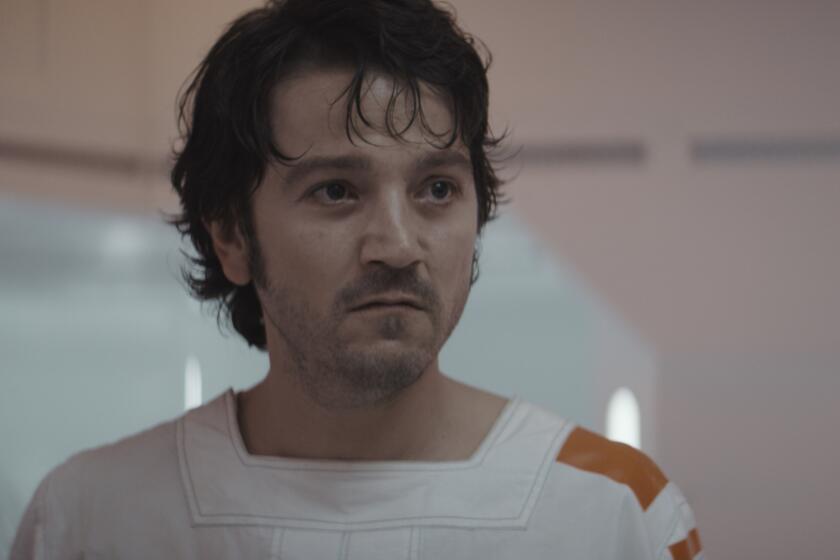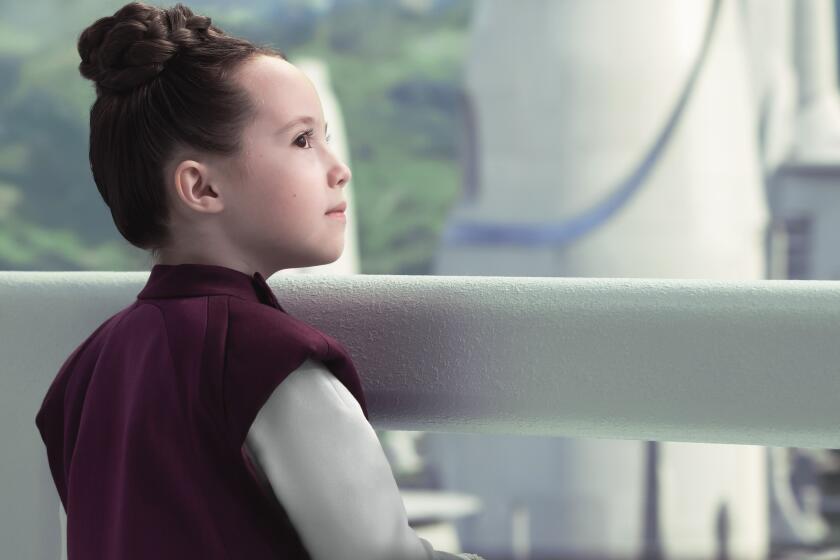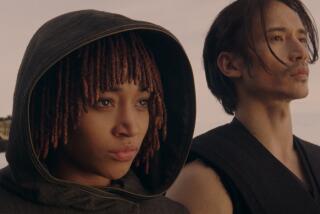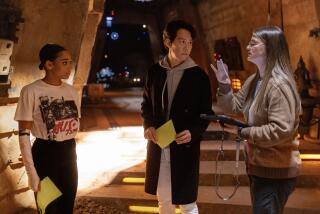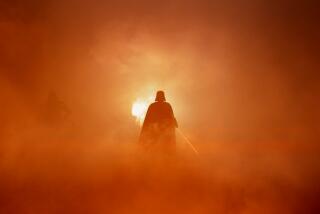Commentary: ‘Ahsoka’ proves that ‘Star Wars’ has long been a galaxy where women can be heroes

- Share via
When Ahsoka Tano crashed into Anakin Skywalker’s life as his newly assigned padawan apprentice in 2008’s animated “Star Wars: The Clone Wars,” she changed “Star Wars” forever.
Much like her master, the teenager was reckless, impulsive, stubborn and didn’t always follow the rules. She was also the first female Jedi protagonist that audiences got to see in action on screen in a franchise that until pretty recently held lightsaber-wielding users of the Force in the highest regard.
“Star Wars: Ahsoka,” which premiered Tuesday on Disney+, is the next chapter in the character’s 15-year legacy and will similarly break new ground on the live-action side of the galaxy far, far away. Starring Rosario Dawson, the series boasts “Star Wars’“ first nonhuman title hero as well as a core cast primarily composed of women. Both are representational milestones, and examples of how “Star Wars” has become much more inclusive compared to when the original film premiered in 1977.
How a prequel of a prequel, starring Diego Luna as future Rebellion spy Cassian Andor, became the jewel in the crown of ‘Star Wars’ television.
“Ahsoka” is also the first “Star Wars” series built almost exclusively on a foundation established in animated “Star Wars” shows. Though shows like “The Mandalorian” have introduced characters and references from established “Star Wars” lore including from animation, “Ahsoka” — created by head writer David Filoni, George Lucas’ protégé — is a continuation of a story that started in animation and stars characters who were originally animated.
The series is an acknowledgment that some of the franchise’s richest and most meaningful storytelling has long been happening on television, particularly in animation. That “Ahsoka’s” representational wins do not feel as momentous as they appear on paper is also a credit to the groundwork laid out by animated shows like “The Clone Wars” and “Star Wars Rebels.”
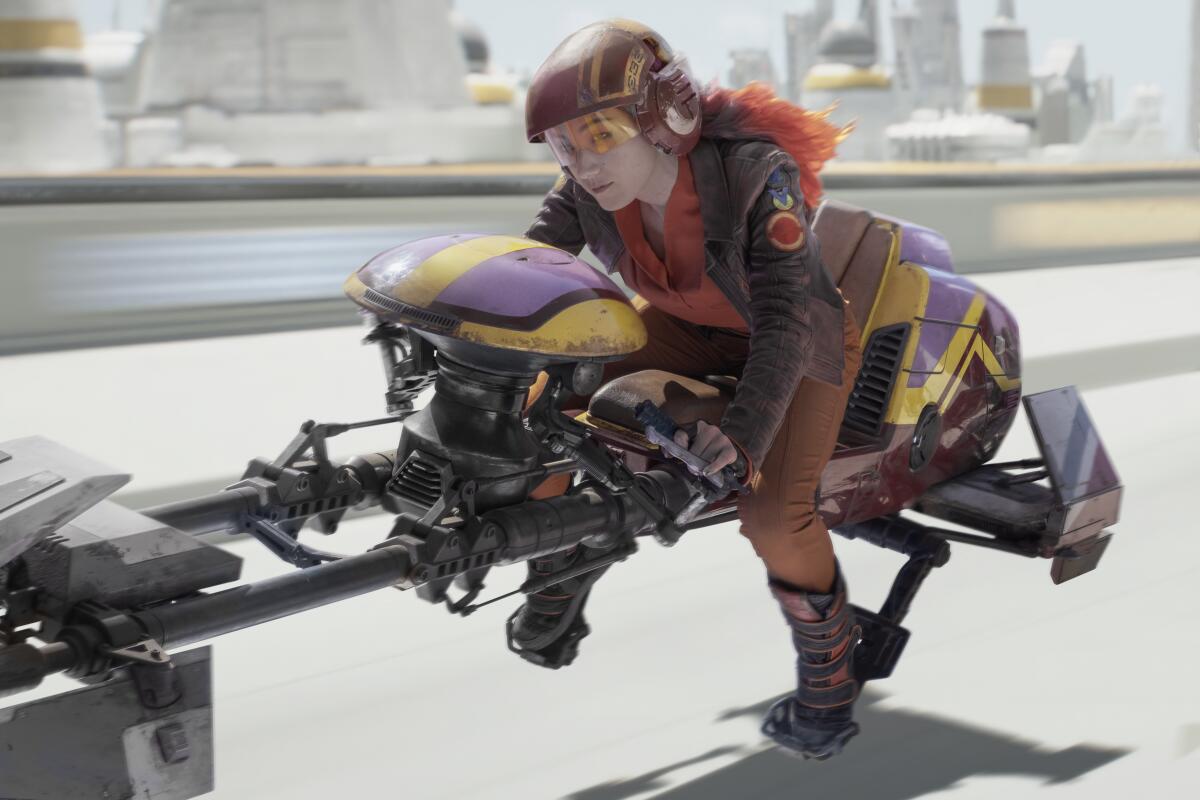
As imaginative as the vast galaxy introduced in the “Star Wars” films has been, their vision for who could be the hero has been a bit more narrow. It’s been over 45 years since the original film, now officially known as “Star Wars: Episode IV — A New Hope” (1977), introduced audiences to Leia Organa (Carrie Fisher), a princess who broke the mold with her courage and proficiency with a blaster. But as beloved and influential as she was, she appeared to be one of very few women fighting in the rebellion and was more a supporting player to her twin brother Luke’s hero journey.
It’s no secret that until recently “Star Wars” has had a lackluster history when it comes to representation (both in front of and behind the camera). It wasn’t until the third trilogy of the nine-film series known as the “Skywalker Saga” that the central Chosen One meant to save the galaxy was a woman (Rey, portrayed by Daisy Ridley). The sequel trilogy, which launched with 2015’s “Star Wars: Episode VII — The Force Awakens,” was also the first of the core film series that featured a more diverse cast, including more than a couple of women in prominent speaking roles.
But those who had been following “Star Wars” television at that time had long been immersed in the heroics of a young, female Jedi trainee. Over the course of “The Clone Wars’“ seven-season run, Ahsoka battled on the front lines, learned from other Jedi, including Anakin and master Yoda, made friends and suffered losses. Ahsoka was more than just “the girl”; she was a girl that happened to be a Jedi in a series that also showed women as politicians, mercenaries, teachers, daughters and warriors.
‘Star Wars’ has long been a franchise fixated on the Skywalker men. The latest entry in the canon finds hope, and emotional resonance, in Leia Organa.
Joining Ahsoka in her series is Sabine Wren (Natasha Liu Bordizzo) and Hera Syndulla (Mary Elizabeth Winstead), two characters originally introduced in “Rebels.” The four-season series followed the close-knit ragtag crew of the Ghost, who were fighting back against the oppressive Galactic Empire even before there was a formal Rebel Alliance in the years preceding the events of “A New Hope.”
The Ghost crew included a couple of Jedi — Kanan Jarrus and his padawan Ezra Bridger — but Sabine and Hera were just as formidable and indispensable to the story. A skilled combat pilot, Hera is one of the leaders and the heart of the crew whose commitment to the cause was second to none. An explosives expert, Sabine is as much an artist as she is a warrior. Ahsoka, now a grown-up ex-Jedi, also appeared and worked alongside the Ghost crew at times.
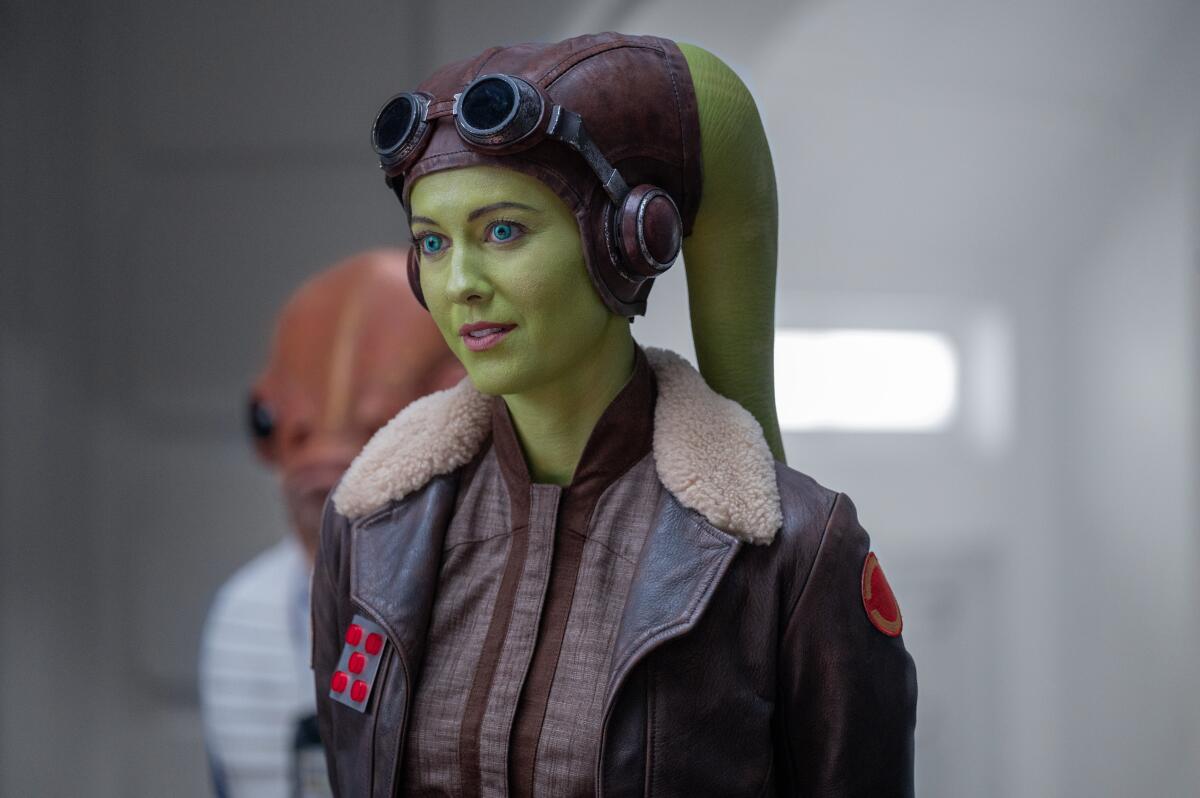
Ahsoka, Sabine and Hera helped shatter the “Star Wars” glass ceiling by showing that girls were just as capable as lightsaber-wielding Jedis, ace pilots and weapons experts as any boy named Skywalker. (They also showed that there should be room for more than one girl in every “Star Wars” story.) Though there was nothing expressly stopping people of any gender from dreaming of being a Jedi or a Mandalorian before these shows, it was still meaningful to actually see that representation. It also meant a new generation of “Star Wars” fans would never assume that women couldn’t be warriors or pilots from the start.
Plus, from the color of their skin to their head tails, Ahsoka and Hera are visibly different from the average human of Earth. That further negates any argument about what “Star Wars” heroes have to look like. Because, despite the diversity of its wider fandom, “Star Wars” — especially in the live-action realm — has had a history of being subject to racist and sexist backlash from some viewers who cannot understand that women and people of color can thrive in the galaxy far, far away too.
Animation has always been a bit ahead of the curve in “Star Wars.” “Ahsoka” is a sign that live-action has finally caught up.
More to Read
The complete guide to home viewing
Get Screen Gab for everything about the TV shows and streaming movies everyone’s talking about.
You may occasionally receive promotional content from the Los Angeles Times.
